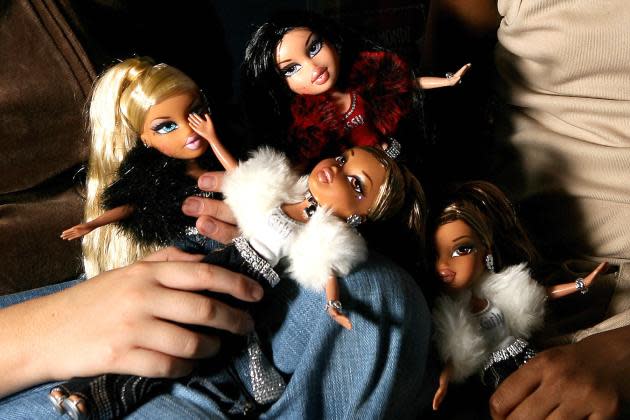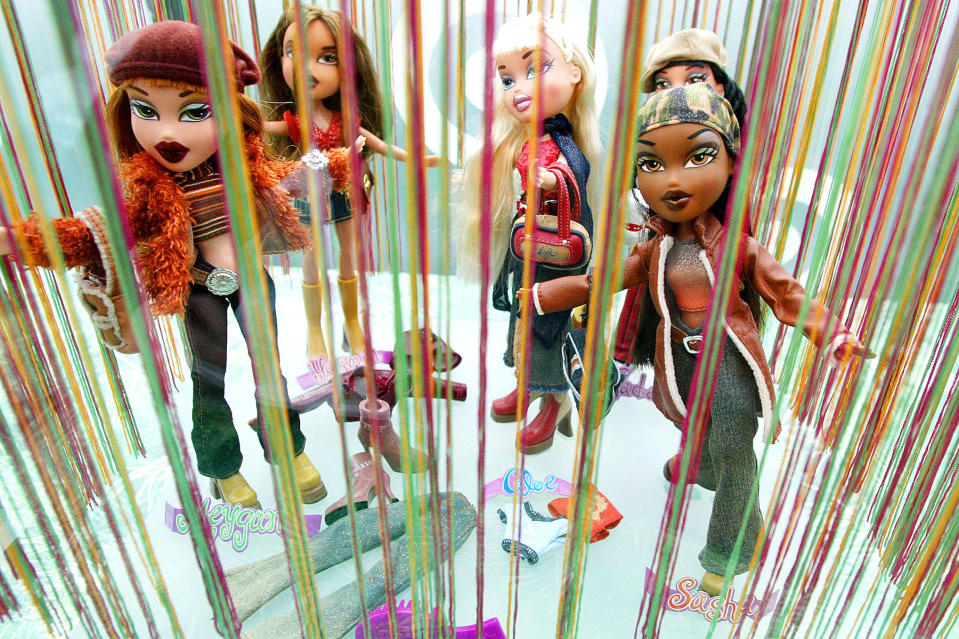What Do Bratz Fans Think of the ‘Barbie’ Movie?
- Oops!Something went wrong.Please try again later.
- Oops!Something went wrong.Please try again later.

Clawdeena has always had a fascination for dolls. The Los Angeles-based content creator had about 150 Bratz dolls and 50 Barbies in her childhood years. Her favorites: Bratz’s Jade and Barbie’s Raquelle, because they aligned with her half-Chinese identity. Despite having a shared love for both, she says she gravitated toward the street-style appearance and the unapologetic rebellion associated with the Bratz brand as a kid.
“It did feel exclusionary,” Clawdeena, 23, says. “There was a very specific image of what it meant to be a Barbie.”
More from Rolling Stone
Lizzo Drops the 'Bad Day' Version of Her 'Barbie Album' Standout 'Pink'
How Kristin Gore and OK Go's Damian Kulash Created 'The Beanie Bubble'
Greta Gerwig’s hotly anticipated Barbie movie has received overwhelming attention from adults and children alike, all eager to hit the theaters in pastel-pink outfits, in part due to a robust marketing campaign consisting of everything from insurance ads to a Barbie-inspired burger. With an opening weekend box office return of $155 million, the highest ever for a female director, some moviegoers admit to being Bratz fans first and feeling underrepresented by Mattel’s signature brand.
Although when most people hear the word “Barbie” they envision a blonde, blue-eyed doll, the brand (and the film) have made recent strides to alter the narrative.
Camille Bryant, a 19-year-old college student from Virginia, got her first Bratz doll at the age of 5, grew up watching the Bratz movies, and says she felt Bratz dolls were marketed more to women of color. “If I had a Black Barbie, I felt like it did not look anything like me because they only had straight, light brown hair or black hair,” she says. Christianah Yerokun, a 24-year-old fashion influencer who goes by tianakun, says it took her time to realize the lack of Black characters in the Barbie movies she watched growing up, and she began to appreciate Bratz in her 20s: “I started relating more to Bratz because I could see someone that kind of looked more like me.”

For Lisa Williams, who founded The Fresh Dolls in 2011, she noticed most dolls had Caucasian face sculpts painted in different complexions with similar hair textures, a look that appealed to Eurocentric beauty standards. And, when talking with toy manufacturers, one person told her that Black people will buy any toy you put on the shelf.
“The reason why we buy what’s on the shelf is because we don’t have any authentic options,” Williams said in response to the manufacturer. (Now, The Fresh Dolls boasts more than a hundred complexions and dozens of face molds.)
Bratz was different. Founded in the early 2000s, Bratz represented a spunkier, trendsetting counterpart to Mattel’s career-oriented doll, and in 2004 the “passion for fashion” toy outsold Barbie in the U.K. The doll appealed to a growing popularity in “urban aesthetic,” says Washington State University comparative ethnic studies professor Lisa Guerrero, and exemplified the girl who wants to shop, club, sleep late, repeat. To conservative consumers, the doll’s full lips and cropped clothing were deemed hypersexualized for children. After a viral “Bratz Challenge” in 2017, beauty influencers embraced the dolls’ winged eyeliner and plumped, glossy lips. Young consumers could see themselves in Bratz’s ethnic characteristics, Guerrero says, whereas Barbie’s social image represented a white, straight, middle-class woman.
“She’s never gonna get away from being that symbol of perfected, idealized womanhood, which unfortunately, leaves a lot of people out of that imagination,” Guerrero explains.
The Barbie brand has made strides to diversify. After Barbie’s debut in 1959, the toy was first marketed as a single doll you buy several costumes for, says Barbie’s Queer Accessories author and Bates College professor Erica Rand. Later, Mattel introduced the first Black doll as a friend of Barbie in the 1960s. And the launch of the “We Girls Can Do Anything” campaign in 1985 resembled white feminism or liberation based on individual achievements and career endeavors that neglect other marginalized communities, Rand says. In 2016, body types like “curvy, petite, and tall” were introduced, and in recent years, Mattel’s Barbie Fashionistas line has developed dolls with Down syndrome, a prosthetic leg, and a wheelchair.
Clawdeena, who has worked on brand deals with both Bratz and Barbie, says she’s Sweden when it comes to picking between the coveted toymakers. It’s OK if you’re a Bratz fan and still see the Barbie movie – many people will. No matter your alliance, in Clawdeena’s eyes, the movie could change the way you view the pastel-pink doll.
“I didn’t really like Barbie, not even because of not feeling represented, but just because I didn’t like the quality she was putting out at the time,” she says. “I didn’t feel like her toys were innovative in the way that other doll lines were. The movie really humanized this character.”
Best of Rolling Stone

